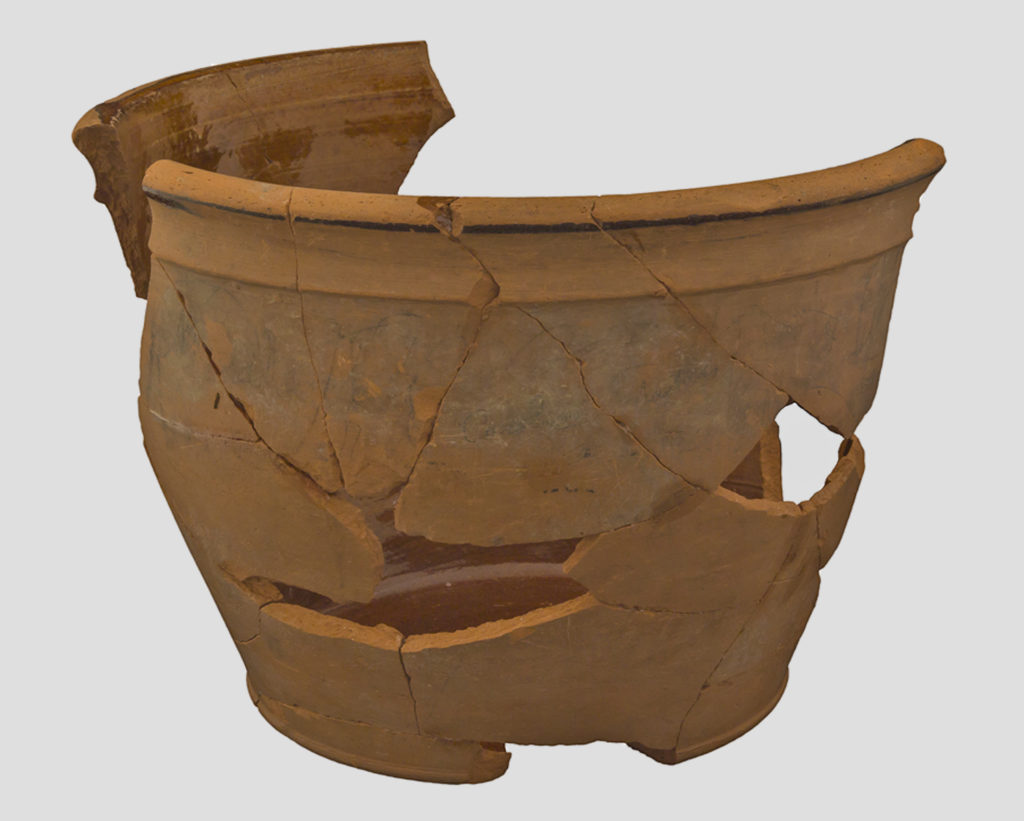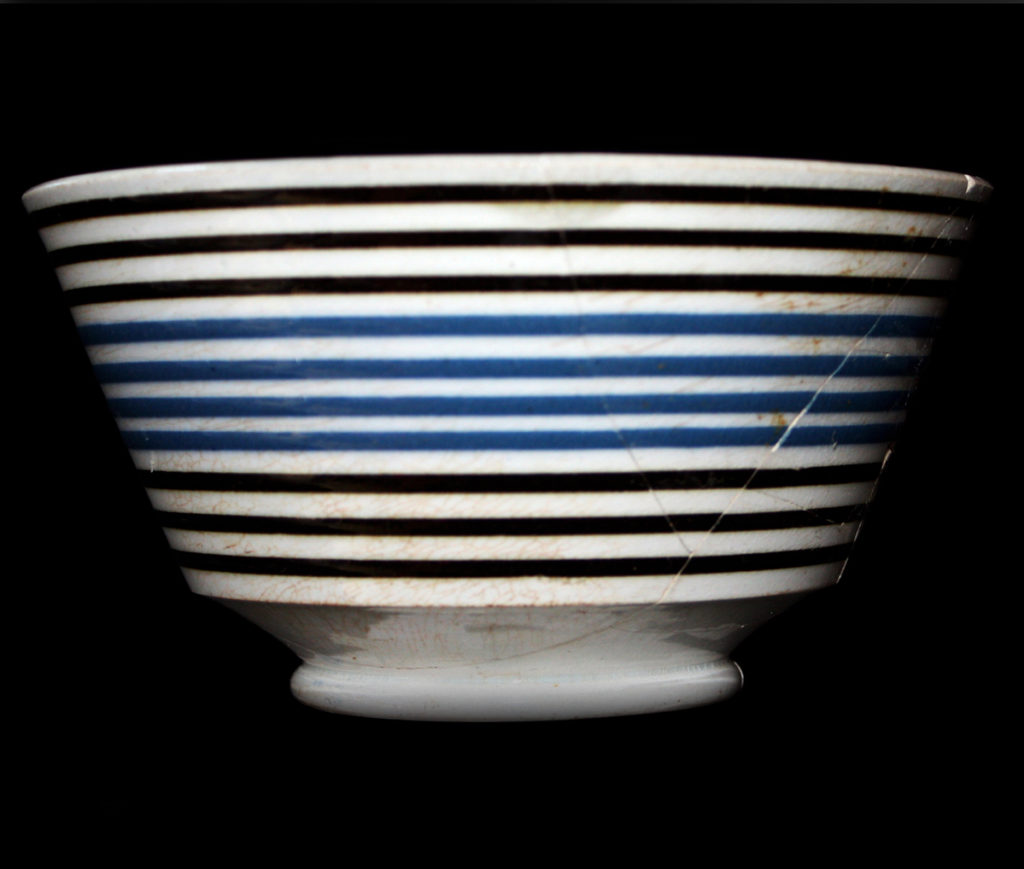Redware

[distance1] Also known as coarse red earthenware, redware demonstrates a heavy, thick, clay body that must be glazed (lead glaze) in order to be non-porous. In general, these utilitarian vessels were used in the kitchen and dairy for food preparation and storage. Although made in many different places, the fragility of the vessels (they were easily […]
McNair Site
The McNair site was a 1.0 hectare village occupied during the middle of the fifteenth century AD. A sizable and noteworthy ceramic assemblage was recovered from McNair including 539 analyzable vessels, 184 miniature or juvenile vessels and 433 smoking pipe fragments.
Elmbank Church and Cemetery
In advance of construction for a new runway, taxiway and deicing facility at Lester B. Pearson International Airport, ASI was retained to excavate the structural remains of a nineteeth-century Catholic church and rectory, as well as exhume and rebury a total of 622 individuals from its associated cemetery. The vast majority of those interred at Elmbank were […]
Factory Slip: Banded

Banding, the application of bands of colored slip to a vessel, was a long-lived decorative technique in dipped earthenware. Bands of slip were added to the ceramics by trailing them with a slip bottle onto a vessel mounted horizontally on a turning lathe. These wares are sometimes referred to as “annular wares,” a collector’s […]
Government House
As part of the the production of a War of 1812 documentary film, ASI was retained to excavate an exploratory trench in order to locate the remains of the Government House on the grounds of the Fort York National Historic Site. A total of 3,986 Euro-Canadian artifacts related to the house and Fort York were […]
Movember: Moustache Teacup

In honour of Movember, we wanted to show you the moustache teacup we found at the mid-to-late nineteenth century Weir I site in Scarborough. This teacup is nearly complete, with a floral decalcomania motif. Moustache teacups were made with a semicircular ledge on the inside to protect one’s highly-styled and waxed moustache from steaming tea. A small opening in the ledge would allow the tea […]
Queen’s Wharf Schooner
(LiDAR Capture)

In May 2015, ASI archaeologists discovered a schooner dated to the early nineteenth-century during an archaeological assessment of the Fort York Boulevard and Bathurst Street area, downtown Toronto. The mast step of the ship yielded an American penny, dated to 1827, which provided the date and origin for the schooner. (To learn more about “mast stepping” […]
Archaeology 101

What is archaeology? This may seem like a straightforward question, but you would be surprised with the answers that Canadians give to this question. In the early 2000s, the University of British Columbia and Department of Canadian Heritage carried out a public survey in collaboration with Ipsos Reid on Canadians’ perception, knowledge and attitudes toward archaeological heritage. They surveyed a random […]
Challenges of archaeological collections management

While buildings are among the most visible elements of heritage landscapes, they are frequently like the tip of the proverbial iceberg, associated with vast underground archaeological deposits capable of fleshing out cultural history narratives – of both pre-contact Indigenous and post-contact Euro-Canadian occupations – in substantial detail through their careful investigation. The task of curating these finds is fulfilled by over 450 consulting archaeologists licensed under the Ontario Heritage Act by the […]
Upper Canada’s first parliament buildings: A place of hopes and dreams

The discovery a decade ago of archaeological remnants of the first and second parliament buildings of Upper Canada in Toronto’s Old Town focused the attention of the city, province and nation on a cornerstone of Canadian history.


